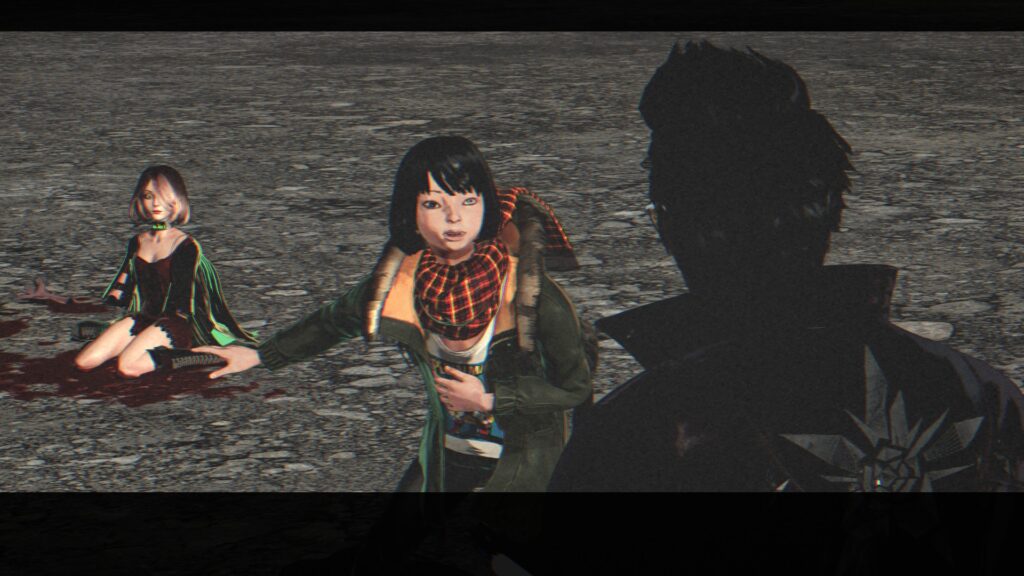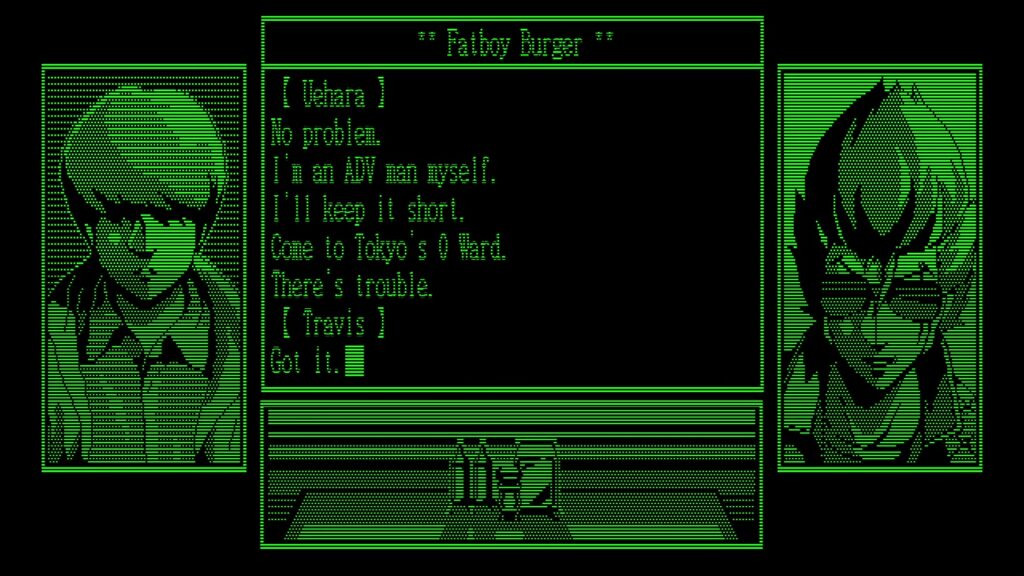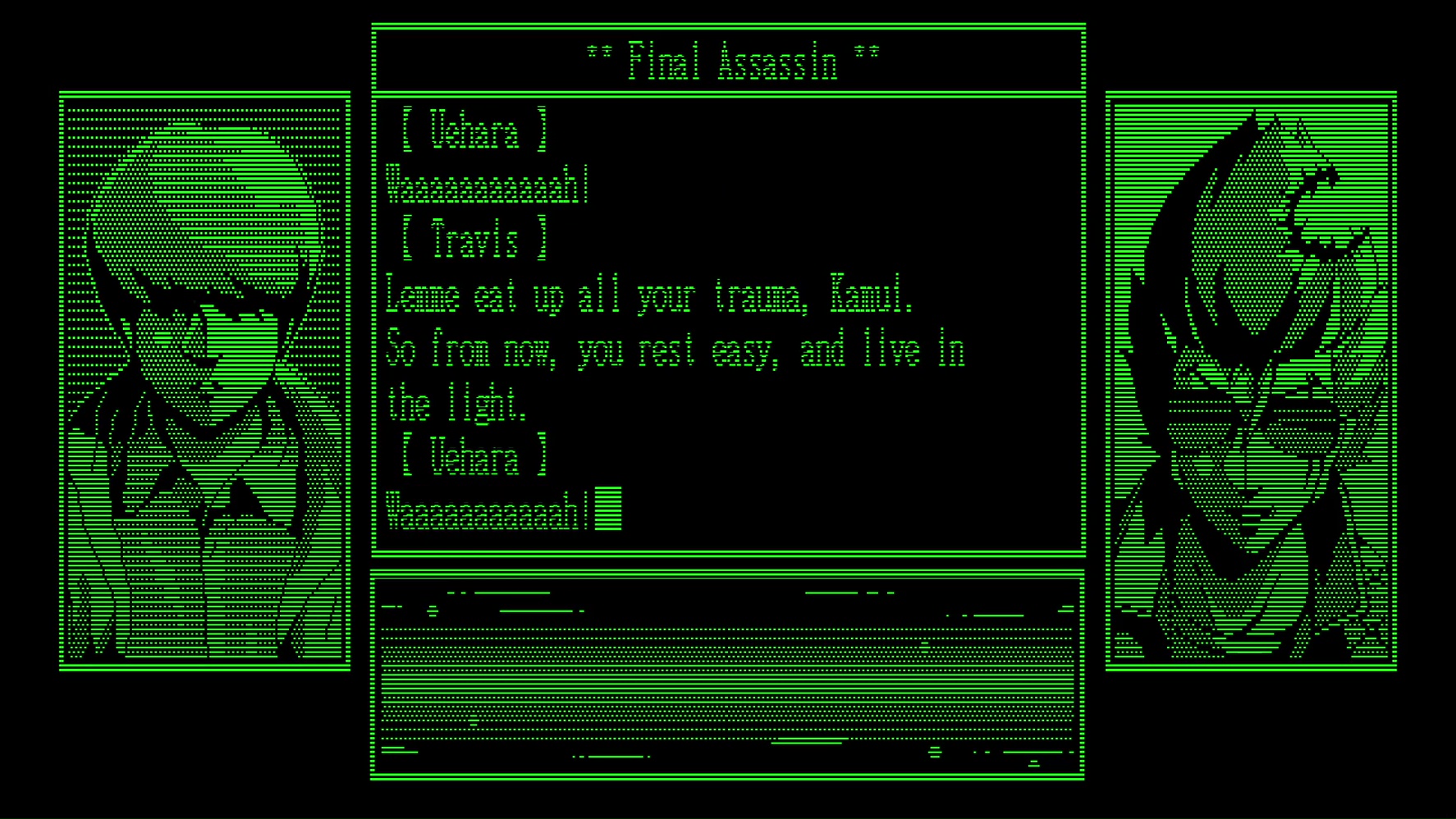
The Newtype Kamui returns a few more times to talk to Travis and Bishop about media (he doesn’t care for Japanese movies), to teleport in and encourage Travis before the final battle, and to deliver a blow to FU at the climax. In the post-credits scene, he reappears with Midori to attend Badman’s funeral. In none of these contexts is Uehara particularly important—he is just one of a succession of Travis’s buddies who pop in to attack FU—though it is notable that Suda seems especially determined to include him.
***
We have observed the deterioration of Kamui’s liberatory potential since The Silver Case. However, by 2021 (in-universe as well as the real-world year), Kamui has regained the largely positive associations of the 1999 savior Kamui. He is friendly, supportive, associated with light, and, in his childlike Newtype appearance, linked to youth. Defying his presumed orders in “Quark-Gluon Plasma,” he shifts from the ineffective policeman of The 25th Ward to become, once again, a rebel. However, calling my liberatory interpretation or, yet again, the series’ political character into question is that this friendly Uehara still identifies himself as an “observer,” an agent of the RA Bureau.
That he posssesses Kurumizawa’s abilities to transform himself into white polygonal shapes confirms he is the source of the power. But he is also Uehara. This rewrites The 25th Ward so that the previously ineffective Uehara was, in reality, assisting Kurumizawa all along. Newtype Kamui even executes liberatory violence: he delivers one of the chain of killing blows to FU, not only an abusive murderer and conquering dictator but one aligned specifically with a sleazy, gentrifying real estate company similar to the Uminosuke-aligned urban development projects of the Japanese police state.
But Uehara’s motivations in Travis Strikes Again are unclear. There is no obvious reason he would embark on this mission for Aoyama and Akama. If he works for the RA Bureau, not only is it presumably disbanded with the end of The 25th Ward, but this would also have no clear connection to anything he does in Travis Strikes Again.

In “Modern Observation,” Uehara meets Travis at Fatboy Burger and requests he fly to Tokyo because of “trouble” there. But Travis does not seem to resolve any kind of trouble before leaving Japan. Helping Travis find the Death Balls could serve a geopolitical purpose, one that the fourth and fifth Kamui would favor: thwarting imperialism and another semi-Maspro by wiping out the CIA. From this perspective, Uehara is taking steps to ensure this outcome. He might, then, be in league with Klark, or Aoyama and Akama might be in league with Klark, or they might be associates of Travis’s own time-traveling children and direct the powerful Uehara to help with the Death Balls for this reason.
Or rather, this would be a reasonable context except that Uehara tries to kill Travis in “Quark-Gluon Plasma.” The betrayal is unexplained except in the metatextual joke that the climax needs a big fight. As it is, Uehara’s primary function continues to be the same as in The 25th Ward: a largely clueless goon and a semi-joke character stuck in the story of the real protagonist, previously Shiroyabu and now Travis.

By “killing his past,” Uehara is able to live in the light and seek the future, no longer mindlessly obeying orders like Format Kamui but acting in his own interests. But how does he kill the past this time? It turns out what Kamui needed to escape the “cycle of crime, dehumanization and death,” the dehumanization and murder and abuse that haunts and enrages him because his childhood and future were stolen—is a buddy who could “eat up” his trauma by letting him have a big cry (despite this buddy valuing his accomplices little enough to just kill them).